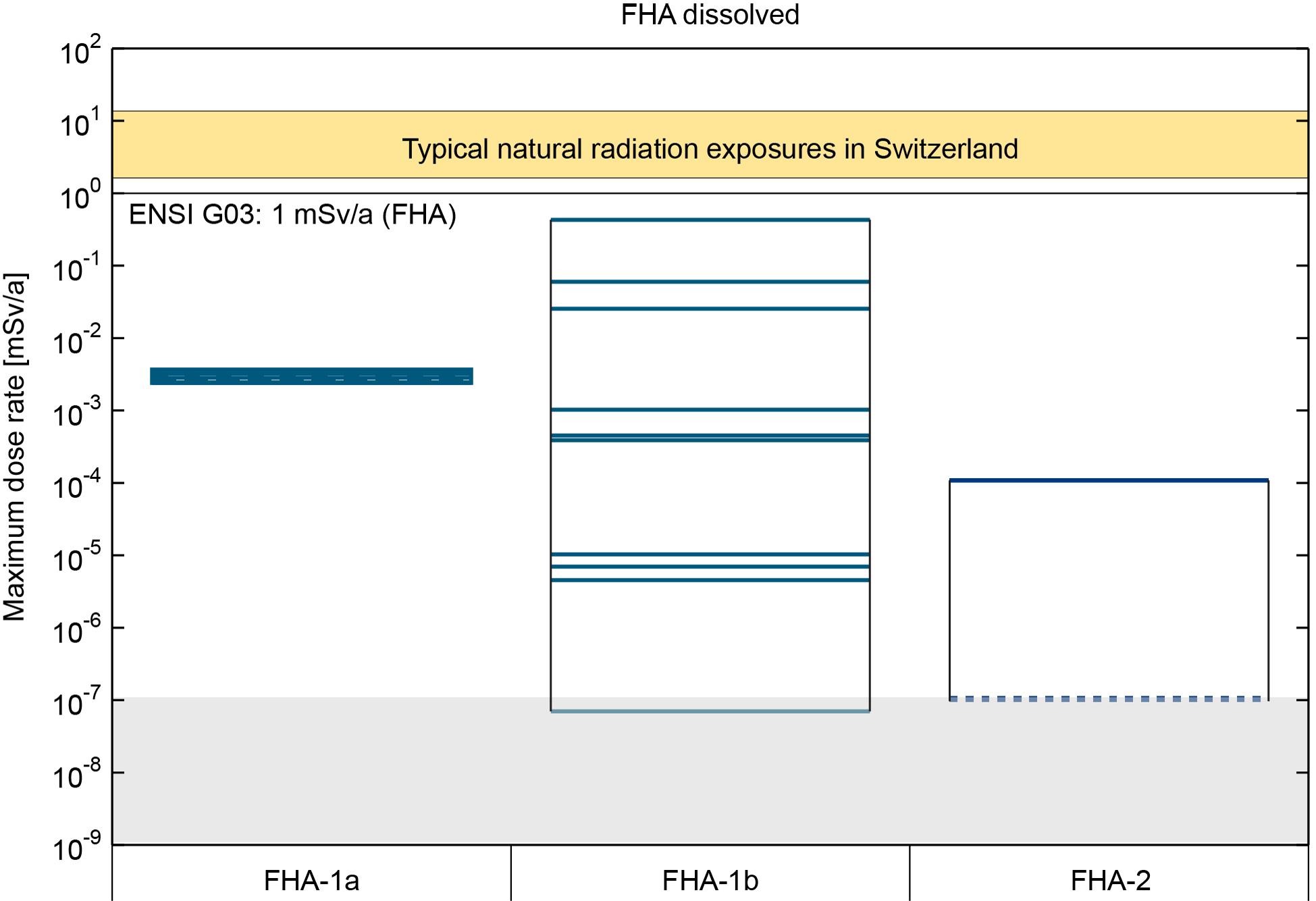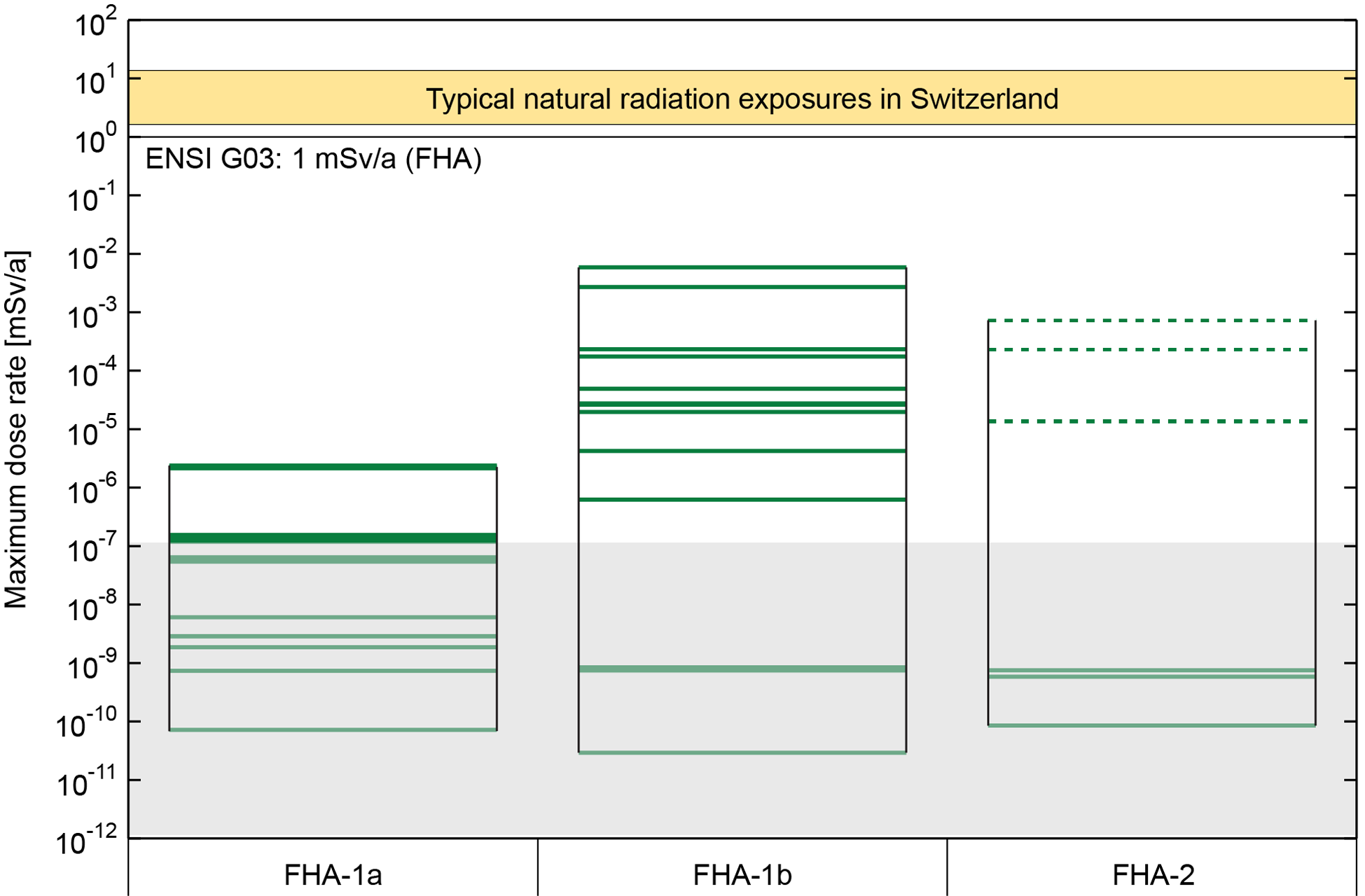The following is a synthesis of the detailed results presented in NAB 24-09 (Nagra 2024r), where the derivation and the analysis of FHA safety scenarios are described in detail.
Two FHA safety scenarios have been identified for quantitative analysis (see Section 7.5):
-
direct hit of the disposal canisters / containers by a deep borehole (FHA-1),
-
abandonment of the repository (FHA-2).
For FHA-1, two variants with two or three calculation cases are propagated to radiological consequence analysis, while for FHA-2 only two calculation cases are propagated. A summary is provided in Tab. 8‑9 (for details, see Section 7.5). Note that, within a calculation case, different parametrisations were used to explore sensitivities and the impact of remaining uncertainties (see Chapter 3 of NAB 24-09, Nagra 2024r for details).
Tab. 8‑9:Calculation cases for the FHA safety scenarios
Within a calculation case, several parametrisations may be used to explore sensitivities and the impact of remaining uncertainties.
|
FHA safety scenario |
FHA # |
Waste |
Calculation cases |
Specifics |
Transport modelling approach |
|---|---|---|---|---|---|
|
Deep borehole |
FHA-1a |
HLW |
FHA-1a-DH-Diss |
SF only |
Aqueous |
|
FHA-1a -DH-Vol |
SF only |
Two-phase flow |
|||
|
FHA-1b |
L/ILW |
FHA-1b-WP-Diss, FHA-1b-PFP-Diss |
L/ILW |
Aqueous |
|
|
FHA-1b-PFP-Vol |
L/ILW |
Two-phase flow |
|||
|
Abandonment |
FHA-2 |
HLW & L/ILW |
FHA-2-Diss, FHA-2-Vol |
SF and L/ILW |
Aqueous, two-phase flow |
The results of the FHA dose calculations are summarised in Fig. 8‑13, which provides an overview of the maximum dose rates for the different calculations performed.
The spread of the results highlights the dependency of the radiological consequences on the details of a future borehole placement and penetration. In particular, the release of the rather short-lived 14C via a gaseous phase and the conservative assumptions of instantaneous and non-limited dissolution of the L/ILW inventory for the aqueous phase calculations lead to strong dependencies on assumptions such as, e.g., the penetration time or the flow regime along the borehole.
Nevertheless, and despite the conservative assumptions, the maximum dose rates for all the FHA calculation cases are considerably below the regulatory limit for FHA (i.e., 1 mSv/a).
(a)

(b)
Fig. 8‑13Summary figure showing the maximum dose rates over 106 years for the future human action calculation cases for the aqueous phase transport of all radionuclides (a) and for two-phase transport of 14C (b)
The spread of the results is due to the different calculation cases and, within the calculation cases, different parameterisations, whereby for the FHA-2 safety scenario permeabilities are varied for the L/ILW (dashed) and HLW (solid) access tunnels. Part of the spread of the aqueous phase results for the L/ILW direct hit scenario (FHA-1b) is moreover due to different waste packages considered in different calculations. See NAB 24-09 (Nagra 2024r) for details. Oxidising conditions are assumed for these calculation cases.

